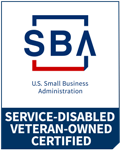8 Employee Engagement Metrics that Matter
A paycheck and benefits package used to be the only draw for many job seekers as they searched for their workplace. Times have changed. The culture, feel, and vibe of an organization weigh heavily on the decision of many applicants. Of course, there’s also the “what’s in it for me” factor – what are my benefits beyond pay and benefits for working here?
An engaged employee is often a productive employee who stays with the organization for an extended period. He or she feels they’ve found their “home” in terms of work life. Why does this matter? It’s expensive to hire and train new employees. Retention saves money, time and effort.
But how do you measure employee engagement ? Here are some common metrics that can be used to measure the level of each one.
1. What is the absentee rate? How fast do employees turn over?
The easiest way to determine if your employees are engaged is whether or not they show up faithfully for work and whether or not they stay. It’s that plain and simple. If there’s a better offer across town and they take it, your employee may not be engaged. A good rule is that 10% or less turnover a year is acceptable, while higher than 10% indicates there may be issues that need to be addressed.
2. Is your office fun?
How on earth do you make an office fun? Well, it’s not as hard as it sounds. It just takes some creativity and organization. Consider activities like:
- decorating contests
- incentive rewards
- creating a recognition program – reward people for going above and beyond, for saving the day, for being a customer favorite
- hosting a “bring your dog/kid/buddy to work” morning
- providing free coffee or snacks
- taking exercise timeouts during the day to keep everyone moving
- holding a potluck and with the company bring the main entrée
There are countless little things you can do daily, weekly or monthly that add up to a fun, fulfilling place of employment.
3. What do employees think of the boss?
Some bosses are highly involved in the day to day duties of employees while others are more comfortable in an autonomous environment. Regardless of the work dynamic, a positive interpersonal relationship can be established and maintained with a few points of contact. Consider offering weekly one-to-one meetings with your employees so that they have an opportunity to openly discuss their wins and challenges with you. Or take your employees out to lunch from time to time as a fun and informal perk. You can also start in-office meetings with your team by encouraging everyone to share some fun personal wins or discuss a project they’re working on outside of work.
If the employee sees the boss as someone who oversees them but who is also caring, grateful and approachable, the result will be a more satisfying professional relationship.
4. Is this a positive work environment?
Start with the communication elements – meetings, emails, team member interaction. Is the theme one of praise and support or blame and shame? Next move to the general tone around the office. Do people seem happy as they complete their tasks or is there tension and stress? Most employees seek an environment where they are appreciated, heard and respected by their colleagues and superiors. If any of these elements are missing, the team member can become disengaged, resentful or isolated.
5. What’s next?
Personal growth is desirable to most people. Do your employees have goals that they strive to attain? Are there financial or benefit-based incentives attached. An employee who sees a path toward growth or advancement is more likely to remain engaged over one with a position set in stone. Look for opportunities to expand the team member’s role while benefitting the company both short and long-term.
6. Let Them Lead
Give your employees a chance to show you what they can do in various leadership settings. Let them “test drive” the boss’s role. Let them present a training session to their peers or allow them to weigh in on a management decision. Assign them a research project that’s needed for a new initiative. This type of strategy demonstrates that their expertise matters and has merit.
7. Health and Wellness
Health and fitness are huge with today’s worker. Not only is it important to stay in shape and feel good, but healthy employees are often more productive and happy. Does your office provide healthy choices for lunch and snacks? Is there an opportunity to exercise or move about throughout the day? Do you give employees a couple “personal days” each year as part of their time off? Does the company offer a gym membership discount? Could they sponsor a 5k? Demonstrating that you care about the employee beyond what he or she contributes to the company is a great way to signal a holistic relationship and thereby maintain engagement.
8. Alignment
Today’s employee has causes they care about – including things like animals, less fortunate families, the elderly and more. Consider a quarterly charitable push to build comradery and demonstrate that the company cares about the community it serves. This type of activity often costs little and provides feelings of satisfaction and pride. It also serves as great fodder for social media and customer/client interaction.
As you strive to keep your employees productive, healthy and engaged, you may also want to consider new office furniture to keep them comfortable as well as engaged. At Office Furniture EZ we offer a huge selection of new and used desks, chairs, and office furniture. If you’re not sure on where to start, visit our ideas page for some inspiration.







